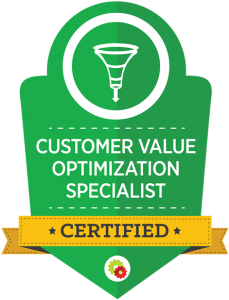Organizational Culture
How to bring it to life

Living Work Culture in Practical Terms: A Guide to Thriving in Today's Workplace
In the modern workplace, culture isn't just a buzzword; it's a critical component that influences productivity, employee satisfaction, and overall success. But what does "living work culture" mean in practical terms? How can organizations and employees alike cultivate and maintain a positive work environment? Let's explore some key aspects and actionable steps to make work culture a lived experience rather than a mere concept.
Understanding Work Culture
Work culture encompasses the values, beliefs, behaviours, and attitudes that characterize an organization. It's reflected in how employees interact, how decisions are made, and how work is approached. A positive work culture promotes collaboration, innovation, and well-being, while a toxic one can lead to burnout, high turnover, and reduced performance.
Key Elements of a Positive Work Culture
Clear Values and Mission: A well-defined mission and set of core values provide a sense of purpose and direction. Employees should understand and align with these values, which guide decision-making and behaviour.
Open Communication: Transparent, honest communication fosters trust and collaboration. Encouraging open dialogue at all levels of the organization helps address issues promptly and promotes a culture of mutual respect.
Inclusivity and Diversity: Embracing diverse perspectives leads to richer ideas and innovation. Creating an inclusive environment where everyone feels valued and heard is crucial for a thriving work culture.
Recognition and Rewards: Regularly acknowledging and rewarding employees for their hard work and achievements boosts morale and motivation. Recognition can be as simple as a thank-you note or as formal as an award ceremony.
Work-Life Relationship: Encouraging a healthy relationship between work and personal life prevents burnout and promotes overall well-being. Flexible working hours, remote work options, and understanding the importance of time off are key components.
Practical Steps to Cultivate a Positive Work Culture
Lead by Example: Leadership sets the tone for the organization. Leaders who embody the company’s values and demonstrate a commitment to a positive work culture inspire their teams to do the same.
Foster Team Building: Regular team-building activities, both formal and informal, help strengthen relationships and enhance collaboration. This could include team lunches, off-site retreats, or even virtual hangouts.
Provide Development Opportunities: Investing in employee growth through training, workshops, and mentorship programs shows that the organization values its people and their professional development.
Encourage Feedback: Implement mechanisms for regular feedback, such as surveys, suggestion boxes, or town hall meetings. Act on feedback to show employees that their voices matter and can lead to real change.
Celebrate Successes: Take time to celebrate both individual and team achievements. Celebrations can be big or small, but they should be genuine and show appreciation for hard work and dedication.
Prioritize Health and Well-being: Promote physical and mental health through wellness programs, access to mental health resources, and initiatives that encourage a healthy lifestyle.
Create a Safe Environment: Ensure that the workplace is safe and free from harassment or discrimination. Clear policies and procedures should be in place to address any issues promptly and effectively.
The Role of Employees in Living Work Culture
While leadership plays a significant role, employees also contribute to shaping the work culture. Here’s how:
Engage Actively: Participate in company initiatives, provide feedback, and take part in team activities.
Support Colleagues: Offer help and support to teammates, creating a collaborative and supportive environment.
Adhere to Values: Align personal actions and behaviours with the company’s core values and mission.
Promote Positivity: Foster a positive attitude and approach challenges with a solution-oriented mindset.
Conclusion
Living work culture in practical terms requires continuous effort and commitment from both leaders and employees. By fostering a positive, inclusive, and supportive environment, organizations can enhance productivity, boost morale, and create a workplace where everyone thrives. Remember, work culture isn't built overnight, but with consistent actions and a shared vision, it can become a powerful driver of success and satisfaction.
https://mark-lzvplfws.scoreapp.com
https://mark-luq6hkbb.scoreapp.com
Share
Opsdel3000 LTD

All Rights Reserved |Opsdel 3000 | Privacy Policy



